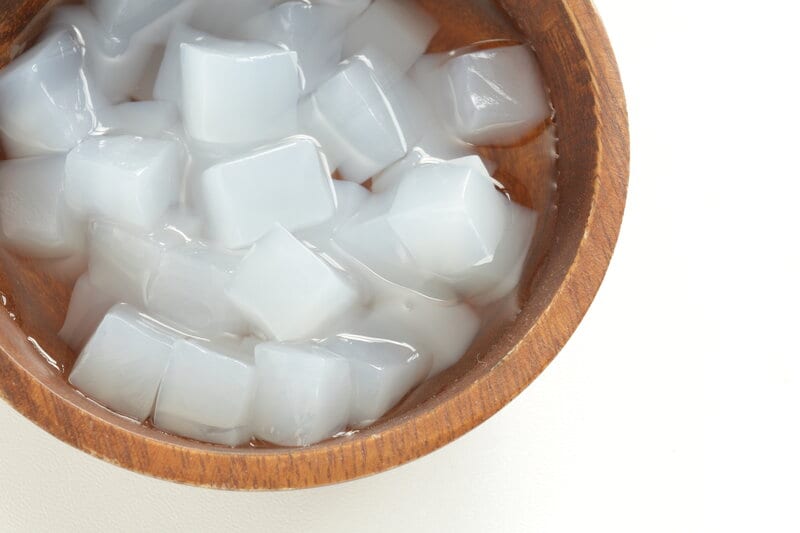
Asian desserts are known for their unique and delicious flavors, often incorporating ingredients that may be unfamiliar to Western palates. One such ingredient that is commonly used in Asian desserts is nata de coco, a type of chewy, translucent jelly that adds a delightful texture to a variety of sweet treats. But have you ever wondered where nata de coco comes from and how it is made? In this article, we will uncover the secrets behind this popular ingredient and reveal the process of how nata de coco is manufactured.
Nata de coco is a type of chewy, jelly-like food product that is made from fermented coconut water. It is believed to have originated in the Philippines, where it is a popular ingredient in desserts and beverages. Nata de coco is often white or clear in color and has a slightly sweet taste. It is commonly used in dishes such as fruit salads, ice creams, and bubble teas, adding a unique texture and flavor to these treats.
The process of manufacturing nata de coco begins with the extraction of coconut water from mature coconuts. The coconut water is then filtered to remove any impurities and mixed with a culture of Acetobacter xylinum bacteria. This bacteria is responsible for the fermentation process that transforms the coconut water into nata de coco. The mixture is then left to ferment for several days, during which time the bacteria feed on the sugars in the coconut water and produce a network of cellulose fibers that give nata de coco its characteristic texture.
As the fermentation process progresses, the coconut water thickens and solidifies into a gel-like substance. The nata de coco is then cut into cubes or other shapes and stored in a sweet syrup solution to preserve its freshness and flavor. Once the nata de coco is fully formed, it is ready to be packaged and sold to consumers or used as an ingredient in various desserts and beverages.
One of the key benefits of nata de coco is its high fiber content, which can help aid digestion and promote gut health. It is also a low-calorie food, making it a popular choice for those looking to maintain a healthy diet while still indulging in sweet treats. Nata de coco is also rich in vitamins and minerals, including calcium, potassium, and vitamin C, making it a nutritious addition to any dessert or beverage.
In addition to its health benefits, nata de coco is also a versatile ingredient that can be used in a wide variety of dishes. In addition to desserts, nata de coco can be added to salads, cocktails, and even savory dishes to add a unique texture and flavor. Its chewy consistency and slightly sweet taste make it a popular choice for chefs and home cooks looking to experiment with new and exciting ingredients.
While nata de coco may not be a familiar ingredient to many Westerners, it has been a staple in Asian cuisine for centuries. Its unique texture and flavor have made it a popular choice for desserts and beverages throughout the region, and its health benefits have only added to its appeal. Whether you are looking to add a new twist to your favorite dessert or simply want to try something new, nata de coco is a versatile and delicious ingredient that is sure to satisfy your sweet tooth.
So, the next time you enjoy a refreshing fruit salad or a creamy ice cream, take a moment to appreciate the secret ingredient that makes these treats so special. Nata de coco may be a small and often overlooked component, but its impact on Asian desserts is undeniable. With its chewy texture, sweet taste, and health benefits, nata de coco is truly a hidden gem in the world of culinary delights.